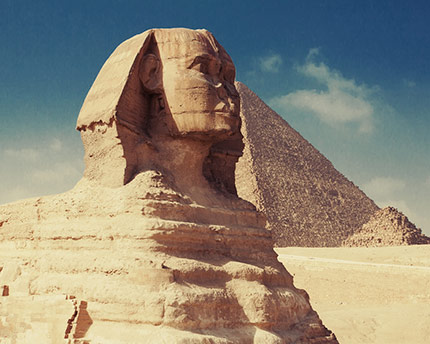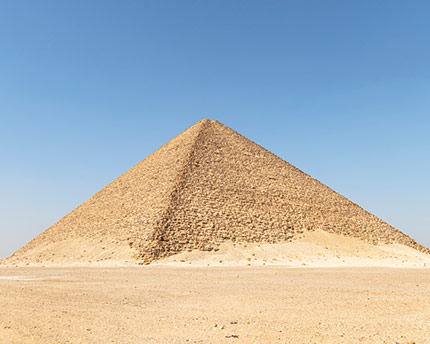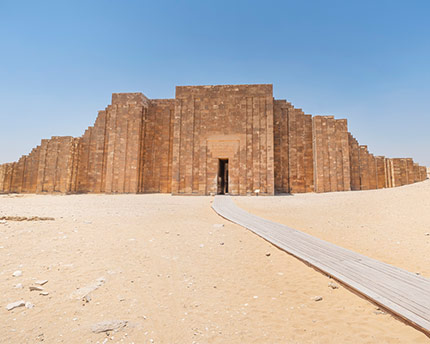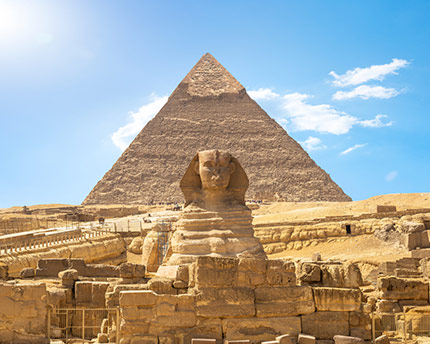One of the most prevalent images in history books and in thousands of Egypt guide books is that of the Great Sphinx. All kinds of hypotheses on this ‘woman’s head with the body of a lion’, as the French explorer Maillet called it, have emerged, which we will talk more about below. For the time being, what we do know for certain is that it is situated roughly 350 metres from the Pyramid of Cheops and its size is immense. The ear measures 1.37 metres; the nose, 1.7 metres; and the mouth, 2.32 metres. The full size of the sphinx is 20 metres high and just under 74 metres long. Without a doubt, you won’t miss it on your visit to the Giza Plateau.
The mysteries that continue to shroud the pyramids, the only wonders of the ancient world that are still standing, deserve a tour organised in detail. The best way to get a feel for their sheer size is by taking a guided tour, if possible, first thing in the morning when it is quieter. Go about your day at a leisurely pace. Although the site is quite large, if it is not too hot, tours can be done on foot (about six kilometres). Morevoer, decide whether you want to go inside everything and if you really do want to buy combined tickets or just tickets for the main places of interest.
History: when it was built
The pyramids were a new feature of the Fourth Dynasty of Egypt, a moment of glory for the Old Kingdom. As part of this zeal for construction other figures such as the Great Sphinx were also built in order to demonstrate the power of the pharaoh. Just take a look at its headdress, representing the royal scarf, and its beard, which in this case is now part of the collection of the British Museum in London. The reason behind the use of a human head and a lion’s body is because the animal is associated with the figure of a powerful and protective being. The Great Sphinx of Giza is usually dated to the middle of the third millennium BC and is attributed to Khafre, who was the son of Cheops.
Reason behind its construction
The Great Sphinx of Giza was built as part of the funerary complex, as a guardian of the tomb or pyramid of the pharaoh Khafre, whom the sculpture’s head could represent. Since the unusual figure sits in front of his funerary complex, this seems like the most logical explanation. Nevertheless, some historians claims that the Great Sphinx was already there when the pyramid of Khafre (Chephren) was built and that it was probably made by Cheops.
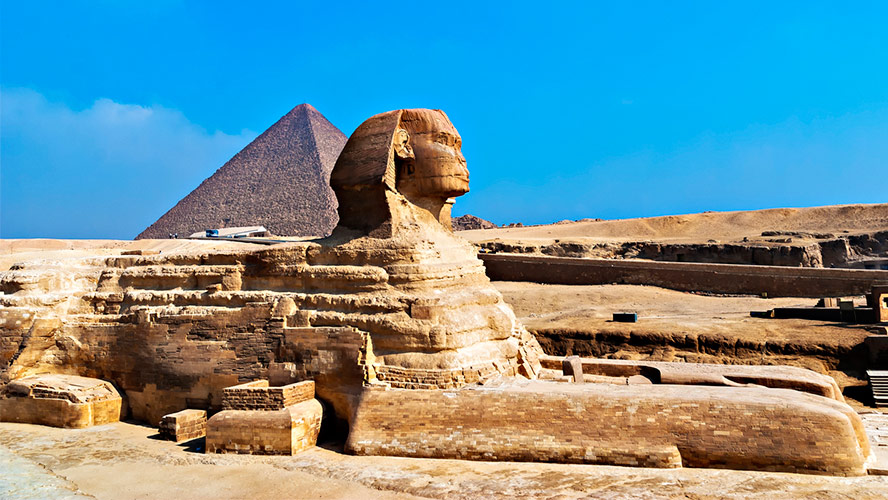
Mysteries and myths behind the sphinx
The Great Sphinx of Giza hides a great many secrets, starting with the fact that it is not known whether the head represents Khafre or Cheops. Inscriptions have been found on the stelae, relating to the sphinx, which are dated to a time before Khafre. There is also an inscription on a tablet known as the Dream Stele, between the paws of the Sphinx, which says that the sphinx was unearthed (it had remained covered in sand for many years), because the pharaoh Thutmose IV had dreamed that if he did so he would become the next pharaoh while still a young prince. Another unsolved mystery is that it seems that there were originally two sphinxes, as indicated by a drawing of the Dream Stele. Who knows if it is still hidden under the sand of the desert!
Some of the most confusing information that has persisted up to the present day includes the belief that Napoleon came to Egypt in 1798, and that he was the first European emperor to see the Egyptian sphinx and the pyramids. All this is well and good but what is more concerning is that his soldiers did target practice on the sculpture and caused it damage, although all of this is unconfirmed and has not been generally accepted.
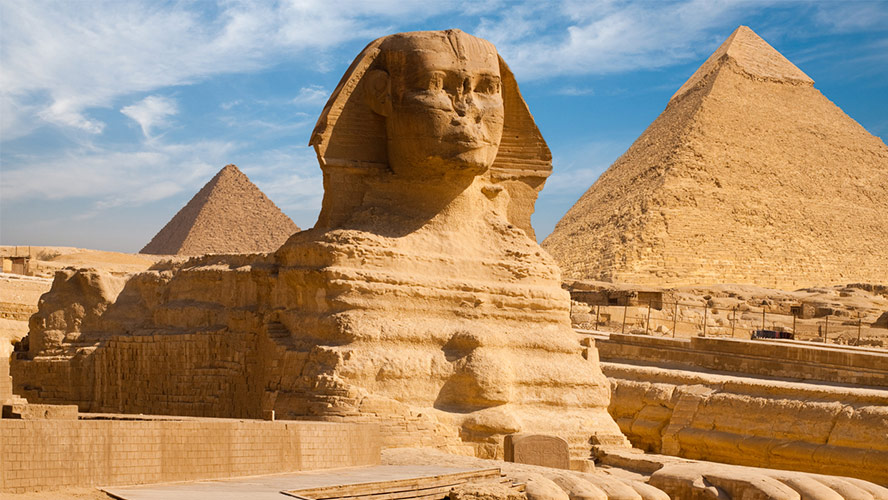
Where to eat close to the Sphinx
On the Giza Plateau, where the Great Sphinx is situated, there are a large number of restaurants, where you can recharge your batteries after a long day of history. Interesting options include El Gizawy, a perfect spot for some good food at very good prices, including soups, salads, falafel and even takeaway food, and El Dar Darak (Giza Pyramids), a clean and welcoming establishment serving delicious Egyptian cuisine. Close to the two previous restaurants is Pyramids, which, although it is a little on the pricy side, has one of the best barbecue dishes in Giza, as well as tasty local fare.
Where to sleep close to the Sphinx
If you want to visit the pyramids and the Great Sphinx of Giza, the best place to stay is Cairo, since it is just a few kilometres away. After a day of sightseeing, enjoying the hubbub of the Egyptian capital is well worthwhile. The city is home to Barceló Cairo Pyramids, a wonderful hotel with European standards. Its 236 rooms are tastefully decorated and it boasts a swimming pool, three restaurants and three bars as well as lovely views of the pyramids. And we can let you in on a secret: if you go up to the 12th floor of the hotel, you will find a beautiful panoramic terrace that looks out onto the pyramids. What more can you ask for!





























































